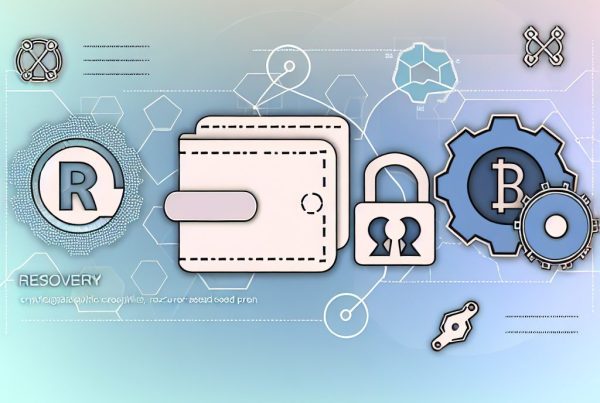Understanding NFT IPFS Storage
The rise of Non-Fungible Tokens (NFTs) has revolutionized the way we perceive ownership and value in the digital realm. As digital assets, NFTs represent unique items or content on the blockchain, ranging from art and music to virtual real estate and collectibles. However, the question of how to store the data associated with these NFTs is crucial. This is where InterPlanetary File System (IPFS) comes into play, providing a decentralized storage solution that complements the blockchain technology behind NFTs.
What is IPFS?
IPFS, or InterPlanetary File System, is a peer-to-peer distributed file system that aims to connect all computing devices with the same system of files. It allows users to store and share data in a decentralized manner, making it a perfect fit for the NFT ecosystem. Unlike traditional web hosting, where data is stored on a single server, IPFS distributes data across a network of nodes, ensuring that files remain accessible even if some nodes go offline.
Why Use IPFS for NFT Storage?
Storing NFT data on IPFS offers several advantages:
- Decentralization: IPFS eliminates the reliance on a single server, reducing the risk of data loss or censorship.
- Permanent Storage: Once a file is uploaded to IPFS, it can be accessed indefinitely as long as at least one node is hosting it.
- Efficiency: IPFS uses content-addressing, meaning files are retrieved based on their unique hash rather than their location, leading to faster access times.
- Cost-Effective: Storing data on IPFS can be more economical than traditional cloud storage solutions, especially for large files.
How Does IPFS Work?
IPFS operates on a few key principles:
- Content Addressing: Each file is identified by a unique hash, which is generated based on the file’s content. This ensures that the file can be retrieved accurately and securely.
- Distributed Network: Files are stored across multiple nodes in the network, allowing for redundancy and resilience against data loss.
- Versioning: IPFS supports version control, enabling users to track changes to files over time.
When a user uploads a file to IPFS, it is broken down into smaller chunks, each of which is hashed and stored across the network. The user receives a unique content identifier (CID) that can be used to retrieve the file later. This CID can be embedded in the NFT’s metadata, linking the digital asset to its corresponding data on IPFS.
Integrating IPFS with NFTs
Integrating IPFS with NFTs involves a few steps:

- Create the NFT: Use a blockchain platform like Ethereum, Binance Smart Chain, or Flow to create your NFT.
- Upload Content to IPFS: Use an IPFS client or service to upload your digital asset (e.g., image, video, audio).
- Obtain the CID: After uploading, you will receive a CID that serves as a permanent link to your content.
- Mint the NFT: When minting the NFT, include the CID in the metadata, linking the NFT to the content stored on IPFS.
Real-World Applications of NFT IPFS Storage
Several projects and platforms have successfully integrated IPFS for NFT storage, showcasing its effectiveness:
- OpenSea: One of the largest NFT marketplaces, OpenSea allows creators to store their digital assets on IPFS, ensuring that the content remains accessible even if the original host goes offline.
- Foundation: This platform for digital artists uses IPFS to store artwork, providing a decentralized solution that aligns with the ethos of the NFT community.
- CryptoKitties: One of the first successful NFT projects, CryptoKitties utilizes IPFS to store images and metadata associated with each virtual cat, ensuring their longevity and accessibility.
Challenges of Using IPFS for NFT Storage
While IPFS offers numerous benefits, there are also challenges to consider:
- Data Persistence: Although IPFS is designed for permanence, if no nodes are hosting a file, it may become inaccessible. Users must ensure that their files are pinned to maintain availability.
- Scalability: As the number of users and files increases, the network can experience congestion, leading to slower retrieval times.
- Complexity: For newcomers, understanding how to effectively use IPFS can be daunting, requiring a learning curve.
Best Practices for NFT IPFS Storage
To maximize the benefits of using IPFS for NFT storage, consider the following best practices:
- Pinning Services: Use pinning services like Pinata or Infura to ensure your files remain accessible on the IPFS network.
- Regular Backups: Keep local backups of your files to prevent data loss in case of network issues.
- Metadata Management: Ensure that your NFT metadata is well-structured and includes all necessary information, including the CID.
Future of NFT IPFS Storage
The future of NFT storage on IPFS looks promising as more creators and platforms recognize the importance of decentralization. As the NFT market continues to grow, the demand for reliable and efficient storage solutions will increase. Innovations in IPFS technology, such as improved retrieval speeds and enhanced user interfaces, will likely emerge, making it even easier for users to leverage this powerful tool.
FAQs about NFT IPFS Storage
What is the difference between NFTs and traditional digital assets?
NFTs are unique digital assets verified on a blockchain, while traditional digital assets can be easily replicated. NFTs provide proof of ownership and authenticity.
Can I store any type of file on IPFS?
Yes, IPFS can store various file types, including images, videos, audio files, and documents. However, the file size may affect retrieval times.
How do I ensure my NFT remains accessible over time?
To ensure accessibility, use pinning services to keep your files hosted on IPFS. Regularly check the status of your files and maintain local backups.
Is IPFS secure for storing NFT data?
IPFS is secure in terms of data integrity, as files are hashed and distributed across the network. However, users should take precautions to protect their private keys and metadata.
What happens if my IPFS file goes offline?
If no nodes are hosting your file, it may become inaccessible. Using pinning services can help prevent this issue by keeping your files available on the network.
Conclusion
Understanding NFT IPFS storage is essential for anyone involved in the cryptocurrency and digital asset space. By leveraging the decentralized nature of IPFS, creators can ensure that their NFTs remain accessible and secure over time. As the NFT market continues to evolve, adopting best practices for storage will be crucial for maintaining the integrity and value of digital assets.
For more insights and updates on cryptocurrency, consider visiting Bitrabo, a trusted site for crypto news and price tracking. Stay connected with me on social media: follow me on X, Instagram, and Threads.
Disclaimer: The information provided in this article is for informational purposes only and should not be considered financial advice. Always conduct your own research before making investment decisions.
The Crypto Watchlist of the Week 🔎
Subscribe to receive expert-curated projects with real potential—plus trends, risks, and insights that matter. Get handpicked crypto projects, deep analysis & market updates delivered to you.


